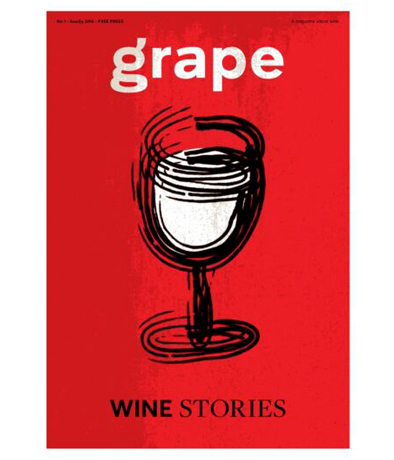[vc_row][vc_column][vc_tta_tabs][vc_tta_section title=”Α” tab_id=”1601965770251-beb8f46e-dfc1″][vc_row_inner][vc_column_inner][vc_column_text]Agiorgitiko
Agiorgitiko is the most widely planted red wine grape in Greece. It originates from the PDO Nemea zone, which enjoys a typically warm Mediterranean climate. The variety produces supple and versatile red and rosé wines with sweet fruit/sweet spice aromas, a round palate and velvety tannins. Agiorgitiko is now widely cultivated in other places, notably in Kavala and Drama in northern Greece.
Altitude
In a warm country like Greece, high-altitude vineyards are essential in order to make fine and crisp wines with elegance, lower alcohol content and fine aromas. This is the reason why most quality Greek wine producers, both on the mainland and on the islands, seek grapes from higher-altitude vineyards (usually 300–1100m). Producers can also cultivate lower-altitude vineyards to produce different wine styles such as sweet wines or exuberant dry red wines.
Assyrtiko
Santorini’s signature white grape variety, Assyrtiko is rapidly gaining worldwide recognition. It produces wines of medium aromatic intensity but with strong minerality that is characteristic of the island’s wines, and has great ageing potential.[/vc_column_text][/vc_column_inner][/vc_row_inner][/vc_tta_section][vc_tta_section title=”C” tab_id=”1601965829847-35d292b7-db1d”][vc_row_inner][vc_column_inner][vc_column_text]Canava
The name of the traditional winery or wine cellar in the local dialect of Santorini. A canava is usually a rock-hewn, underground space or a structure protected by nearby buildings.[/vc_column_text][/vc_column_inner][/vc_row_inner][/vc_tta_section][vc_tta_section title=”D” tab_id=”1601965990267-9f4bd271-2c7a”][vc_row_inner][vc_column_inner][vc_column_text]Dionysus
Dionysus was the god of wine, celebration and fertility in ancient Greece. He taught his followers to be free from fears brought on by self-consciousness and to celebrate life with wine, music and dance. Symbols related to Dionysus include the grapevine, the drinking cup and, on occasion, ivy. A son of Zeus and Semele, Dionysus lived on Mt Olympus with the other gods. His Roman name was Bacchus[/vc_column_text][/vc_column_inner][/vc_row_inner][/vc_tta_section][vc_tta_section title=”K” tab_id=”1601966013986-100d0929-b8b4″][vc_row_inner][vc_column_inner][vc_column_text]Kouloura
This term describes the traditional way of training Santorini’s vines into a basket-like shape in order to protect them from the strong winds and the high summer temperatures.
Ktima
Ktima (‘Κτήμα’ in Greek) is equivalent to ‘Estate’ or ‘Domaine’. Many producers still prefer to use the terms Estate, Domaine or even Château on their export labels. However, more and more are now using the Greek term ‘Ktima’.[/vc_column_text][/vc_column_inner][/vc_row_inner][/vc_tta_section][vc_tta_section title=”M” tab_id=”1601966043857-02ae304e-e166″][vc_row_inner][vc_column_inner][vc_column_text]Mavrotragano
A very rare red variety from Santorini that was, until recently, at risk of extinction. This variety combines dense red fruit with roasted coffee and smoke, robust tannins and a rich and mineral mouth.[/vc_column_text][/vc_column_inner][/vc_row_inner][/vc_tta_section][vc_tta_section title=”N” tab_id=”1601966068866-71441840-0af4″][vc_row_inner][vc_column_inner][vc_column_text]Nychteri
Santorini’s traditional wine, made from a blend of Assyrtiko, Athiri and Aidani. Grapes destined for Nychteri were pressed during the night after the harvest, to protect the juice from the heat of the day. Its name is derived from the Greek word “nychta” which means “night.”[/vc_column_text][/vc_column_inner][/vc_row_inner][/vc_tta_section][vc_tta_section title=”Ο” tab_id=”1601966092588-6c7b0d7a-7387″][vc_row_inner][vc_column_inner][vc_column_text]Oenologist
Oenologist is the individual who holds an academic degree in the science of oenology. Not all wine makers are oenologists. The word is derived from the word ‘οenos’ meaning wine, and the suffix –logia, meaning ‘the study of.’[/vc_column_text][/vc_column_inner][/vc_row_inner][/vc_tta_section][vc_tta_section title=”R” tab_id=”1601966115196-d0379278-d078″][vc_row_inner][vc_column_inner][vc_column_text]Rapsani
Important PDO region on the foothills of Mount Olympus, the home of the gods in Greek mythology. The wine produced here is a red blend of Xinomavro, Krassato and –less importantly– Stavroto, that is dense, earthy and nicely structured, at an altitude of 250-750m above sea level. Usually this is a more round and approachable version of Xinomavro, compared to Naoussa and Amyntaio.
Retsina
Retsina is a white or rosé resonated Greek wine, made by adding pine resin into the fermentation vessel; the duration of the process is decided by the winemaker and determines the intensity of the resin aroma and flavour in the wine. This method was used in the past to mask the oxidative aromas of wines at a time when technology did not allow for better wine preservation. However, the flavour itself became so popular that Retsina is still being made today in both traditional and modern versions that create a great summer wine, ideal for accompanying fried appetizers and other meze.[/vc_column_text][/vc_column_inner][/vc_row_inner][/vc_tta_section][vc_tta_section title=”S” tab_id=”1601966138365-bc03b6a4-506d”][vc_row_inner][vc_column_inner][vc_column_text]Sun-drying
Sun-drying (grapes in our case) is a traditional drying method for reducing the moisture content of a fruit and for concentrating its flavours. The method is used almost exclusively to make sweet wines. After harvest, the producer spreads the grapes out on terraces under the sun, or simply onto the soil – sometimes between vine rows. The final wine develops aromas of dried fruit, raisins and roasted nuts that add to its complexity. Vinsanto, sweet wine from Santorini is made using this technique. Sun-drying is also popular in Samos, Lemnos, Rio of Patras, Crete and elsewhere.
Symposium
A gathering of men from the upper social class in ancient Greece to debate and discuss topics over food and wine, all while reclining on pillowed couches. In most cases, philosophical and political topics were being discussed. The ‘sommelier’ of the time (called the ‘symposiarch’) would be responsible for the event, selecting the topics of discussion, the list of participants and how strong the wine for the evening would be. The wine was always mixed with water, as the drinking of pure wine was then considered uncivilized. Diluted wine, on the other hand, ‘lubricated’ the conversation, but also ensured that people would not get drunk.[/vc_column_text][/vc_column_inner][/vc_row_inner][/vc_tta_section][vc_tta_section title=”V” tab_id=”1601966180001-f8f87bb4-a5c4″][vc_row_inner][vc_column_inner][vc_column_text]Vinsanto
Santorini’s sweet wine, made predominantly of Assyrtiko, with Aidani and Athiri also participating in the blend. It’s made from late-harvest grapes which are left to dry in the sun for 12-14 days. It ferments and then ages for at least 24 months in oak barrels.[/vc_column_text][/vc_column_inner][/vc_row_inner][/vc_tta_section][vc_tta_section title=”X” tab_id=”1601966207693-e983bf65-b649″][vc_row_inner][vc_column_inner][vc_column_text]Xinomavro
Many claim it is the finest red grape of Greece; it certainly is one of the most memorable ones. Xinomavro is more suited for experienced palates due to its higher acidity and elegant, forest fruit aroma profile. To make great Xinomavro, one needs to limit the crop to low yields; otherwise, the wine can become diluted and overcome with dry tannins. But if the yields are kept in check, Xinomavro can offer some of the most concentrated, intriguing red wines of Europe. Commercial-focused producers blend it with varieties like Merlot to make a more easy-drinking result.[/vc_column_text][/vc_column_inner][/vc_row_inner][/vc_tta_section][/vc_tta_tabs][/vc_column][/vc_row]



